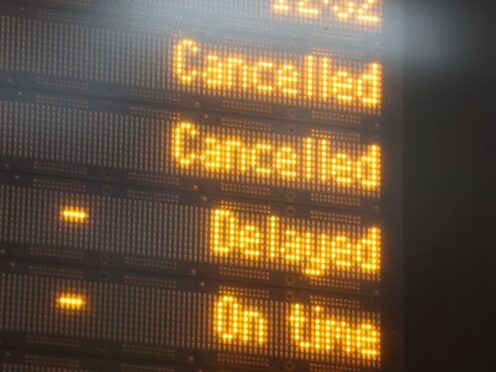
Most Government work to overhaul Britain’s railways is delayed, according to a damning report by Whitehall’s spending watchdog.
The Department for Transport (DfT) has made “limited progress” on rail transformation plans published in 2021, with the majority of changes and expected savings not expected to happen until “at least the next Parliament”, the National Audit Office (NAO) found.
None of 12 “high-level benefits” the DfT aims to achieve with rail reforms were rated green – meaning they are on track – in December 2023.
The department had intended by early 2024 to have set up Great British Railways – a public sector body to oversee the network – as well as establish a new operating model and introduce new passenger service contracts, the NAO said.
But these and most other measures in the May 2021 rail reform White Paper “remain work in progress”, according to the report.
The DfT reported last month that 21 of the 62 commitments require legislation before they can be completed and it has paused work on 11 of them, the watchdog noted.
The report found that the DfT set a “high risk” timetable for the rail reform programme that was “reflecting ministerial ambition” but lacked a “clear plan” for how it would be implemented.
A draft Rail Reform Bill was published by the Government last month for scrutiny in preparation for when legislation can be taken forward.
The NAO said Britain’s rail system “needs to change” as its performance is “not good enough” for passengers and the cost to taxpayers is “too high”.
It stated that the DfT spent £3.1 billion subsidising train services in the 2022/23 financial year.

Gareth Davies, the head of the NAO, said: “The rail sector’s performance for passengers and the taxpayer has not been good enough for some time.
“While DfT identified key problems that need to be addressed as part of its rail reforms, it has not been able to translate this into a deliverable programme.
“The speed at which DfT intended to move on a complex set of reforms gave it too little time to plan, build agreement and deliver.
“DfT should work more closely with organisations across the rail sector to help improve collaboration and culture ahead of any structural changes; clearly understand what it wants to deliver and then set out realistic plans for achieving its objectives.”
A DfT spokesperson said: “The £3.1 billion of subsidies the NAO refers to are a result of external pressures – including the challenges of post-Covid passenger recovery – not related to rail reform savings.
“We have laid out a clear plan for the industry’s future under Great British Railways in our recently published draft Bill and we are now pressing ahead with improvements that will benefit millions of customers like expanding pay-as-you-go ticketing, piloting simpler fares, and announcing a target for rail freight growth.”
Andy Bagnall, chief executive of Rail Partners, which represents private sector rail organisations, said: “It has been five years since the Government correctly identified the need for ‘root and branch’ reform of the railway, and while the draft Rail Reform Bill is a step forward, without actual legislation to create Great British Railways, the plan for rail and the benefits it brings are still stuck in the sidings.
“The NAO report published today shines a light on the consequences of that delay for customers, taxpayers and the industry itself.
“Urgent action is needed to secure the railway’s vital role in driving investment and growth, connecting communities and decarbonising the economy.”

Enjoy the convenience of having The Sunday Post delivered as a digital ePaper straight to your smartphone, tablet or computer.
Subscribe for only £5.49 a month and enjoy all the benefits of the printed paper as a digital replica.
Subscribe